BINAPACRYL
- CAS NO.:485-31-4
- Empirical Formula: C15H18N2O6
- Molecular Weight: 322.31
- MDL number: MFCD00055425
- EINECS: 207-612-9
- SAFETY DATA SHEET (SDS)
- Update Date: 2024-12-18 14:07:02
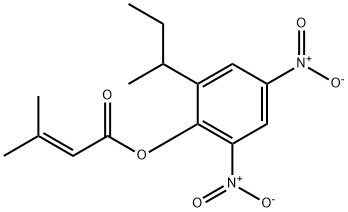
What is BINAPACRYL?
Description
Binapacryl is a nitrophenol pesticide and thedimethyl acrylic ester of dinoseb. Binapacryl is a colorless,crystalline solid or powder. Crystals may turn pale-yellowto brownish on contact with air. The solid may be dissolved in a flammable liquid carrier. Mild, ammonia odor.Molecular weight=322.31; Density=1.238 g/cm3 at20℃. Melting/Freezing=66℃; Boiling Point=437℃ at760 mmHg; Vapor pressure=4.2 3 10 2 7 mmHg at 20℃;Flash point=172℃; but may be dissolved in a flammableliquid carrier. Practically insoluble in water.
The Uses of BINAPACRYL
Binapacryl is a miticide and a fungicide used in pesticides. It is readily metabolized to Dinoseb (D480490) an herbicide in the dinitrophenol family.
The Uses of BINAPACRYL
Fungicide, miticide.
Definition
Generic name for 2-sec-butyl-4,6- dinitrophenyl-3-methyl-2-butenoate. C1 5 H8O 6 N2.
Hazard
Toxic by ingestion and inhalation.
Safety Profile
Poison by ingestion. Moderatelytoxic by skin contact. Mutation data reported. Acholinesterase inhibitor. When heated to decomposition itemits fumes of NOx.
Potential Exposure
Mutagen; cholinesterase inhibitor.Used as an acaricide, fungicide, and miticide. Not registeredin the United States.
First aid
If this chemical gets into the eyes, remove anycontact lenses at once and irrigate immediately for at least15 min, occasionally lifting upper and lower lids. Seek medical attention immediately. If this chemical contacts theskin, remove contaminated clothing and wash immediatelywith soap and water. Seek medical attention immediately. Ifthis chemical has been inhaled, remove from exposure,begin rescue breathing (using universal precautions) ifbreathing has stopped, and CPR if heart action has stopped.Transfer promptly to a medical facility. When this chemicalhas been swallowed, get medical attention. Do not inducevomiting when formulations containing petroleum solventsare ingested. Otherwise, give large quantities of waterand induce vomiting. Do not make an unconscious personvomit.Note to physician: Treat for methemoglobinemia.Spectrophotometry may be required for precise determination of levels of methemoglobinemia in urine.
storage
Color Code—Red (dissolved material in a flammable liquid carrier): Flammability Hazard: Store in aflammable liquid storage area or approved cabinet awayfrom ignition sources and corrosive and reactive materials.Color Code (dry, solid material)—Blue: Health Hazard/Poison: Store in a secure poison location. Prior to workingwith dinoseb you should be trained on its proper handlingand storage. Store in tightly closed containers in a cool,well-ventilated area. Store at temperatures from 0 to 6℃.
Shipping
Binapacryl, solid: label “SUBSTITUTEDNITROPHENOL PESTICIDES, SOLID, TOXIC.” It fallsinto DOT/UN Hazard Class 6.1(b) and Packing Group III.The DOT-required shipping label of “FLAMMABLELIQUID, POISONOUS/TOXIC MATERIALS.” TheHazard Class is 3 and the Packing Group is I.[19, 20]
Incompatibilities
Slight hydrolysis on long contact withwater. Keep away from caustics and concentrated acids thatcan cause decomposition. Slowly decomposed by ultravioletlight. When heated to decomposition it emits fumes ofnitrogen oxides. Contact with metals may evolve flammablehydrogen gas. A nitrophenol may be an oxidizer (ofunknown strength); incompatible with reducing agentsincluding alkali metals, hydrides, nitrides, and sulfides,which might cause a violent reaction or detonation.Nitrophenols may explode when heated. Nitrophenols mayreact as a weak organic acid. Do not mix with Nitric orSulfuric acid as explosive shock- and impact-sensitive saltsmay be formed.
Properties of BINAPACRYL
| Melting point: | 68-69℃ |
| Boiling point: | 460.94°C (rough estimate) |
| Density | 1.238 |
| refractive index | 1.6280 (estimate) |
| storage temp. | 0-6°C |
| color | Crystals or powder |
| Merck | 13,1224 |
| EPA Substance Registry System | Binapacryl (485-31-4) |
Safety information for BINAPACRYL
| Signal word | Danger |
| Pictogram(s) |
 Skull and Crossbones Acute Toxicity GHS06  Health Hazard GHS08  Environment GHS09 |
| GHS Hazard Statements |
H410:Hazardous to the aquatic environment, long-term hazard |
| Precautionary Statement Codes |
P202:Do not handle until all safety precautions have been read and understood. P264:Wash hands thoroughly after handling. P264:Wash skin thouroughly after handling. P273:Avoid release to the environment. P280:Wear protective gloves/protective clothing/eye protection/face protection. P301+P310:IF SWALLOWED: Immediately call a POISON CENTER or doctor/physician. |
Computed Descriptors for BINAPACRYL
New Products
4-Fluorophenylacetic acid 4-Methylphenylacetic acid N-Boc-D-alaninol N-BOC-D/L-ALANINOL Tert-butyl bis(2-chloroethyl)carbamate 3-Morpholino-1-(4-nitrophenyl)-5,6-dihydropyridin- 2(1H)-one Furan-2,5-Dicarboxylic Acid Tropic acid S-2-CHLORO PROPIONIC ACID ETHYL ISOCYANOACETATE 2-Bromo-1,3-Bis(Dimethylamino)Trimethinium Hexafluorophosphate (6-METHYL-[1,3]DITHIOLO[4,5-b]QUINOXALIN-2-ONE INDAZOLE-3-CARBOXYLIC ACID 4-IODO BENZOIC ACID (2-Hydroxyphenyl)acetonitrile 4-Bromopyrazole 5,6-Dimethoxyindanone 2-(Cyanocyclohexyl)acetic acid 4-methoxy-3,5-dinitropyridine 2-aminopropyl benzoate hydrochloride 1-(4-(aminomethyl)benzyl)urea hydrochloride diethyl 2-(2-((tertbutoxycarbonyl)amino) ethyl)malonate tert-butyl 4- (ureidomethyl)benzylcarbamate Ethyl-2-chloro((4-methoxyphenyl)hydrazono)acetateRelated products of tetrahydrofuran
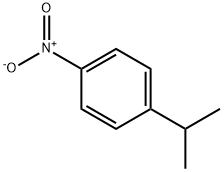
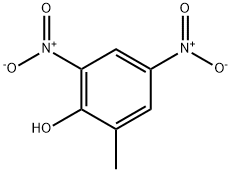

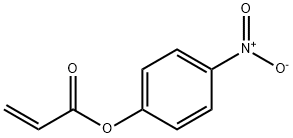

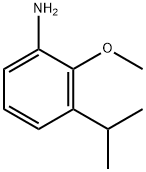

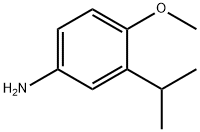
You may like
-
 2033-24-1 98%View Details
2033-24-1 98%View Details
2033-24-1 -
 42831-50-5 5-METHYLISOXAZOLE-4-CARBOXYLIC ACID 98%View Details
42831-50-5 5-METHYLISOXAZOLE-4-CARBOXYLIC ACID 98%View Details
42831-50-5 -
 1975-50-4 98%View Details
1975-50-4 98%View Details
1975-50-4 -
 2-HYDROXY BENZYL ALCOHOL 98%View Details
2-HYDROXY BENZYL ALCOHOL 98%View Details
90-01-7 -
 2-Chloro-1,3-Bis(Dimethylamino)Trimethinium Hexafluorophosphate 221615-75-4 98%View Details
2-Chloro-1,3-Bis(Dimethylamino)Trimethinium Hexafluorophosphate 221615-75-4 98%View Details
221615-75-4 -
 61397-56-6 CIS BROMO BENZOATE 98%View Details
61397-56-6 CIS BROMO BENZOATE 98%View Details
61397-56-6 -
 14714-50-2 (2-Hydroxyphenyl)acetonitrile 98+View Details
14714-50-2 (2-Hydroxyphenyl)acetonitrile 98+View Details
14714-50-2 -
 118753-70-1 98+View Details
118753-70-1 98+View Details
118753-70-1